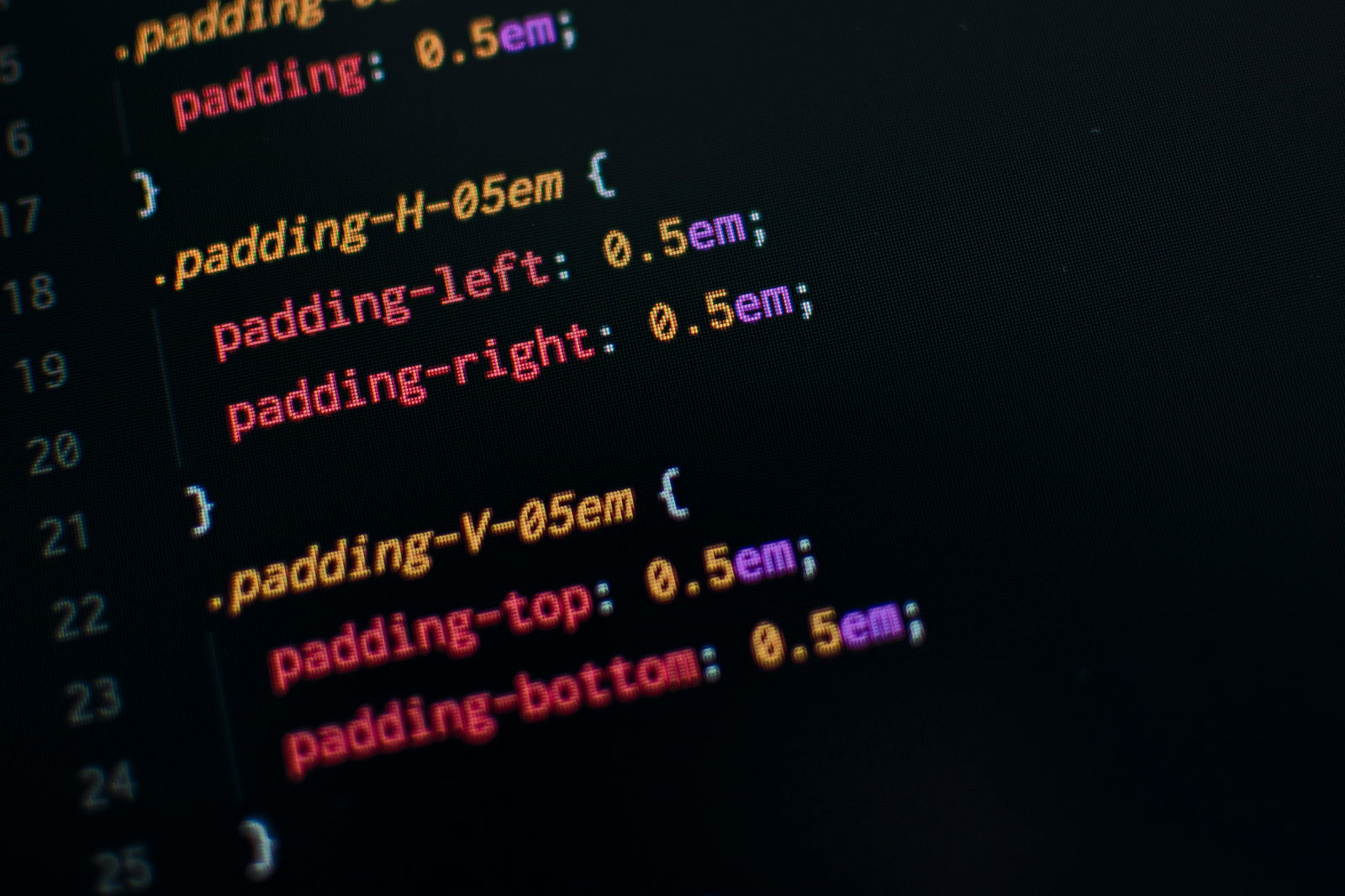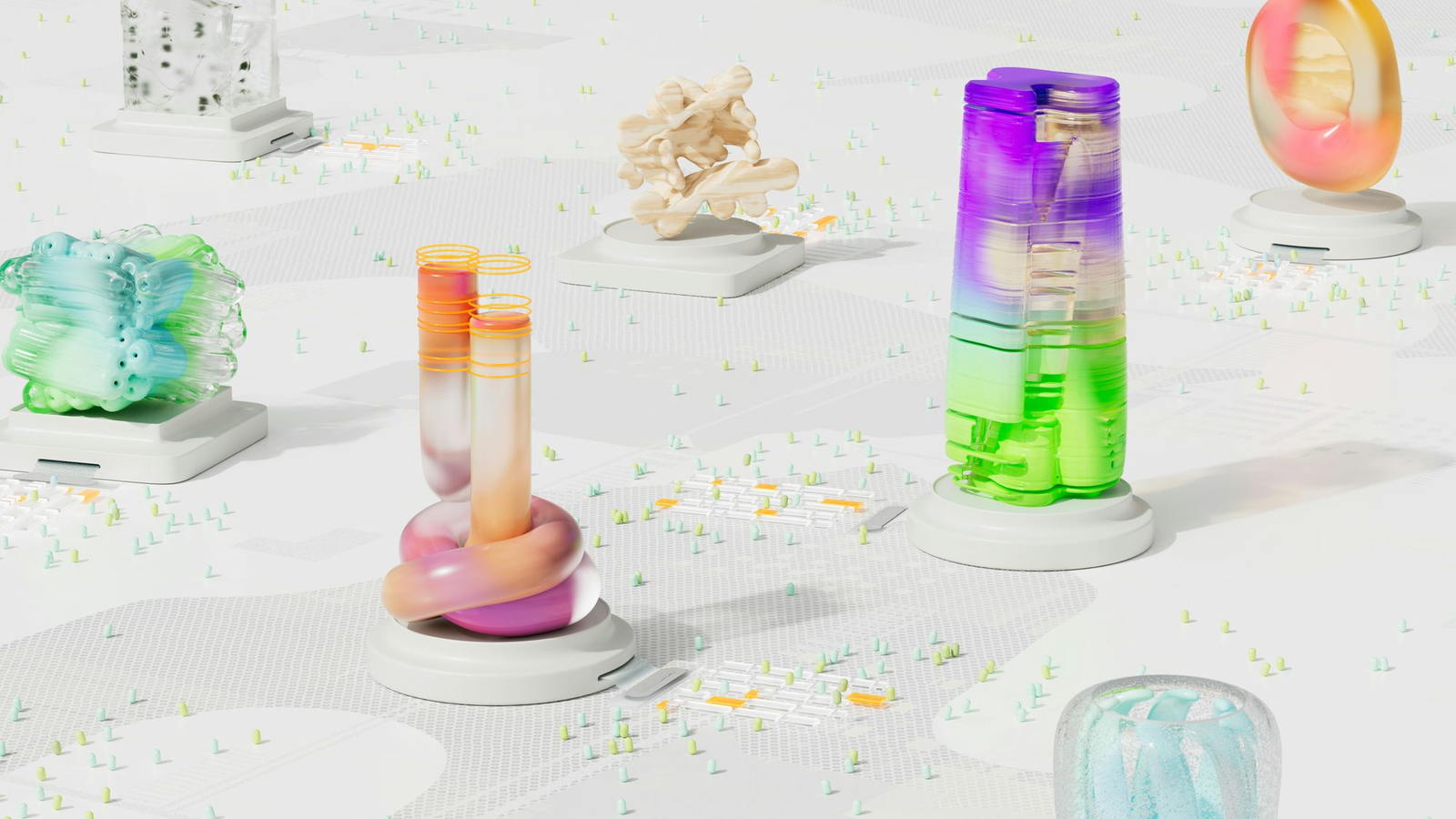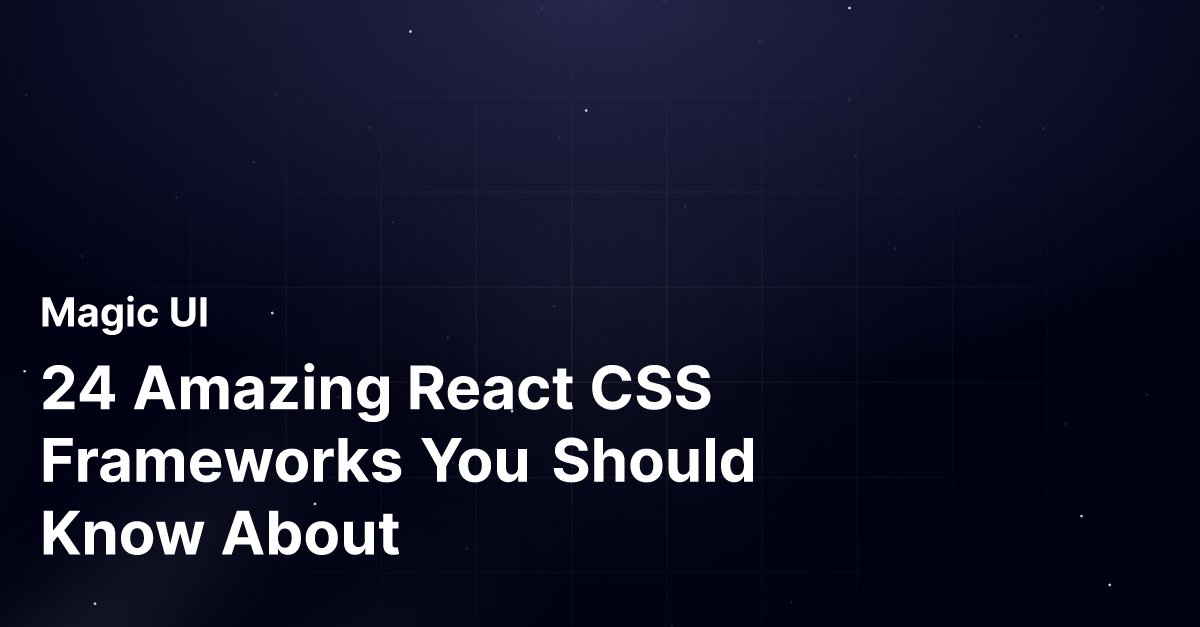Are you a developer searching for ways to enhance your UI Frameworks and React CSS Framework skills? Imagine having access to a diverse range of CSS frameworks for your React projects, enabling you to create visually appealing interfaces effortlessly. This article offers valuable insights into different CSS frameworks for React that you can utilize for your projects, enhancing your development capabilities and ensuring stunning user interfaces.
Magic UI's React component library provides an easy-to-use solution to help you achieve your goals of learning about the various CSS frameworks for React. By exploring these frameworks, you can enhance your projects with visually appealing styles, making your applications stand out while streamlining your development process.
Recap Of React

React is a popular open-source front-end JavaScript library that can be used to build user interfaces (UIs). Facebook developed it and has gained popularity for its efficient and reusable components.
Modular UIs with Reusable Components
React allows developers to build complex UIs by breaking them down into smaller, reusable components. These components can be used across different application parts, reducing the amount of code that needs to be written and maintained.
Declarative Programming and Virtual DOM
React uses a declarative approach to programming, meaning developers only need to describe what they want the UI to look like, and React takes care of the underlying logic to make it happen. React also has a virtual DOM, which helps to improve performance by updating only the changed parts of the UI rather than the entire UI.
Widespread Adoption and Industry Recognition
According to the State of JS Survey 2022, React is the most popular frontend library, with approximately 17.4 million weekly downloads. It is widely used in the industry and has been adopted by many Fortune 500 companies, including Facebook, Instagram, Airbnb, Netflix, and Dropbox.
Expanding Functionality with UI Libraries and Frameworks
The popularity of React has led to the creation of many UI libraries and component frameworks, each with its advantages and features. With these best CSS frameworks for React, developers can easily include pre-built, tested UI components in their projects by building on top of React’s core functionality. It helps to maintain the project in the long run and saves developers time and effort, allowing them to focus on the unique features of their application.
Related Reading
- Component Libraries
- React Best Practices
- React Design Patterns
- What Are UI Components
- React Frameworks
- What Is A Component Library
- React Libraries
What Is A React CSS Framework?

CSS frameworks for React and Component libraries are the foundations of React-based applications. They provide pre-built user interface components that can be easily integrated into the application, saving developers time and effort in creating these components from scratch.
Both the React UI framework and a component library provide UI components, but they differ in their scope and level of customization. Some of the best CSS frameworks for React include Material-UI, React Bootstrap, Semantic UI React, Ant Design, Blueprint, and many more. These frameworks provide a wide range of customizable, pre-built UI components and libraries that can be used to build beautiful and responsive user interfaces.
Here are some differences between CSS frameworks for React and their component libraries based on some key factors:
Scope
CSS frameworks for React offer a set of ready-made UI components, such as navigation menus, layouts, responsive templates, and more, which are integral to building modern-day websites. With the help of these best CSS frameworks for React, front-end developers can save time and effort by using pre-built components already optimized for performance and accessibility while still being customizable to suit their needs. Some popular UI frameworks include Material UI, Ant design, etc.
On the other hand, React component libraries are more specific; they provide individual, reusable components, such as buttons, inputs, and icons, that can be combined and customized to create more complex UIs. Some of the popular component libraries include Magic UI, React Bootstrap, Chakra UI, etc.
Adaptability
CSS frameworks for React are less customizable and have several restrictions, limiting the developer’s ability to create a unique UI design. This set of best CSS frameworks for React has its design patterns and rules that must be followed to keep the application consistent.
On the other hand, React component libraries are more developer friendly and customizable than UI frameworks. Unlike UI frameworks, we can easily customize the designs that match the design of your project, and you don’t need to override the styles used in UI frameworks.
Learning Curve
CSS frameworks for React are difficult to grasp because they have design patterns, constraints, and conventions that must be followed to ensure consistency throughout the application. But once you become familiar with this set of best CSS frameworks for React, it is just a walk in the park.
On the other hand, React component libraries are generally considered easier to use than CSS frameworks for React, as they often have a lower learning curve. Component libraries do not require you to follow a specific set of design patterns and conventions, which gives you greater flexibility and control over the design and functionality of your UI.
Accessibility
CSS frameworks for React and component libraries can help make your application more accessible to all users. Many of these libraries already include accessibility features, so you don’t have to worry about adding them yourself. This means that people with special abilities can still easily use your application.
On the other hand, choosing between various lists of best CSS frameworks for React and component libraries depends on what you need for your project and what you prefer. If you want a lot of pre-made components and a consistent UI design, go for a framework. But if you want more control and customization options, go for a component library.
A Feature-Rich UI Library for Effortless Web App Development
MagicUI is a free and open-source UI library that we designed specifically for design engineers. It offers a collection of over 20 animated components built with React, TypeScript, Tailwind CSS, and Framer Motion. We provide a range of visually appealing and interactive elements that can be easily integrated into web applications, allowing us to create stunning user interfaces with minimal effort.
MagicUI components are highly customizable, enabling seamless adaptation to match our desired branding and design requirements. With our focus on animation and a design-centric approach, MagicUI aims to bridge the gap between design and development, empowering us to craft captivating digital experiences. Along with our free component library, with MagicUI Pro, you can save thousands of hours and create a beautiful landing page, and convert your visitors into customers with our website templates.
Use our React component library for free today at https://magicui.design/docs.
Related Reading
- Best React Native UI Library
- React Component Best Practices
- Tailwind Vs Bootstrap
- Material UI Alternatives
- Best React Component Library
- React Tips
- Create React Component Library
- Cool React Components
- Component Library Examples
- Bootstrap Vs React
- React Native Libraries
- Best React UI Framework
- Best React Native UI Library
- Next.JS
- Next JS
- React Bootstrap
- MUI Table
- MUI Card
- MUI Box
- What Is NextJS
Why Should You Use React CSS Frameworks?
CSS frameworks offer numerous benefits that make them indispensable tools for web development. Here are some advantages that CSS frameworks provide:
1. Faster development time
CSS frameworks come with pre-built components and styles, eliminating the need to write everything from scratch. This speeds up the development process and allows developers to focus on customizing and fine-tuning specific aspects of their projects rather than building from scratch.
2. Consistent style and design
CSS frameworks help provide a cohesive and consistent look across different components and pages. They ensure that all styles, UI elements, buttons, and typography maintain a unified design language, saving developers from spending excessive time on styling and ensuring a better user experience.
3. Improve collaboration and maintainability
CSS frameworks usually offer well-documented libraries and established conventions, making it easier for developers to collaborate and maintain codebases. With a common codebase and extensive documentation, developers can easily understand and work with each other's code.
24 Amazing React CSS Frameworks You Should Know About

1. Magic UI
MagicUI is a free and open-source UI library that we designed specifically for design engineers. It offers a collection of over 20 animated components built with React, TypeScript, Tailwind CSS, and Framer Motion. We provide a range of visually appealing and interactive elements that can be easily integrated into web applications, allowing us to create stunning user interfaces with minimal effort.
MagicUI components are highly customizable, enabling seamless adaptation to match our desired branding and design requirements. With our focus on animation and a design-centric approach, MagicUI aims to bridge the gap between design and development, empowering us to craft captivating digital experiences. Along with our free component library, with MagicUI Pro, you can save thousands of hours and create a beautiful landing page, and convert your visitors into customers with our website templates.
Use our React component library for free today at https://magicui.design/docs.
2. Material UI
Material UI is the React implementation of the well-known design language Material Design. Google developed Material Design to provide a united, consistent, real-life-like design experience for all its products and services. It provides a material design touch to React-based applications. Material UI provides several pre-built UI components like buttons, forms, grid systems, navigation tabs, etc., making it one of the best CSS frameworks for React.
According to NPM trends, Material UI has around 2.8 million weekly downloads. When writing this blog, Material UI had around 85.4K+ stars and 29.4K+ forks on GitHub, which shows its popularity. The best thing about Material UI is that its documentation is well-written, and we can follow along without hassle.
3. Bootstrap
Bootstrap began as an internal tool at X (formerly Twitter) to maintain a consistent look across the platform. Then, in 2011, it was open-sourced for the wider web development community to use. Bootstrap is one of the most widely used CSS frameworks, focusing on responsive, mobile-first web design. It offers a robust collection of CSS and JavaScript components, such as its grid system and responsive UI components like buttons, navigation menus, and forms, that streamline the process of building clean and consistent web layouts.
Bootstrap has large community support and over 100K GitHub stars. And though it may seem bulky when compared to modern options, it's still one of the most used CSS frameworks you can use to build good-looking and thematically coherent web applications without needing to be an expert in CSS and web design.
4. Ant Design
Ant Design proclaimed itself as the second most popular among various best CSS frameworks for React and they are right about that. It has been widely used, and according to npm trends, it has around 1.2 million weekly downloads. Ant Design is like Material UI, providing several UI components that look aesthetic and clean.
Ant Design is based on the design language Ant Design, which has its design patterns and principles, making it one of the best CSS frameworks for React. Ant Design had around 85.1K+ stars and 38.6K+ forks, which shows its popularity among developers. It has about 1900 contributors, and the library is actively maintained.
5. Tailwind CSS
Tailwind CSS is a utility-first CSS framework that allows you to rapidly build custom user interfaces in markup files. As a utility-first framework, Tailwind abstracts from the constraints of a component-based framework, such as Bootstrap. Though component-based frameworks like Bootstrap excel at streamlining the process of building web layouts by providing pre-defined UI components, they’re opinionated in that you’re confined to the current design system and ecosystem of the framework.
Trying to extend or customize your application’s layout beyond what the framework provides can prove to be a workaround. Tailwind offers a robust system of utility and helper classes as building blocks that can be composed to build any design directly in your markup. With Tailwind ranking as the second most used framework in the State of CSS 2023 survey at about 76%, it's the best choice to rapidly prototype and speed up the development process in line with modern web standards.
6. Foundation
Foundation is the closest alternative to Bootstrap. It's not just a CSS framework, but a comprehensive toolkit for styling web applications, architecting email templates, which is known to be notoriously hard, and integrating with ZURB’s Motion UI to create advanced CSS animations.
It includes common UI components like Bootstrap but is more utility-focused and gives developers more options for customizing components. With almost too many features, it can be considerably more complex and harder to understand how everything works compared to other frameworks fully.
7. React Bootstrap
If you’re in the world of web development, or more specifically, if you’re into front-end development, you may already be familiar with Bootstrap. Bootstrap is another popular and one of the best CSS frameworks for React from the list, and it provides a collection of reusable UI components and styles that can be used in any web application. React-Bootstrap is built on top of the Bootstrap CSS framework.
It provides a set of React components based on the Bootstrap CSS framework, making it easier for developers to build React-based responsive and mobile-first design web applications. According to npm, React Bootstrap has around 1.7 million weekly downloads, which shows the library’s popularity.
8. Semantic UI React
You may have heard of or even used Semantic UI before. Semantic UI React is an easy-to-use, highly customizable, and one of the best CSS frameworks for React, offering reusable UI components and styles. Semantic UI React is built on top of Semantic UI, and it is one of the popular libraries that provide reusable React components that are highly customizable. According to npm trends, Semantic UI React garners around 250,000+ weekly downloads.
9. Chakra UI
Chakra UI falls into the same category as MUI as a component library and CSS framework for React applications. It emphasizes accessibility, developer ergonomics, and a customizable design system. Chakra UI provides a collection of well-designed and accessible components that can be easily customized to match your project's branding and style. According to npm trends, Chakra UI has around 460,000 weekly downloads, around 31.8K+ stars, and 2.8K+ forks on GitHub.
10. Emotion
Emotion is built on styled components' concepts to be a more performant, lightweight, and feature-rich CSS-in-JS library. It utilizes features such as source maps, labels, and testing utilities. Emotion is framework-agnostic and has a syntax as close to CSS as possible, making it easier to adopt.
11. Blueprint UI
Blueprint is one of the best CSS frameworks for React. Blueprint provides several reusable components, like icons, calendars, tables, etc., which you can use to make your React application. According to npm trends, Blueprint has around 240,000 weekly downloads and a steadily growing user base. This popularity is due to its comprehensive and well-designed set of UI components and its ease of use and customization. Blueprint has around 20K+ stars and 2.1K+ forks on GitHub.
12. Bulma
Bulma is a modern and lightweight CSS framework that offers a flexible grid system and a variety of CSS styles and components. It focuses on simplicity, modularity, and ease of use. Bulma emphasizes that it is "environment agnostic," meaning it is just the style layer on top of the logic, so it integrates capably with any JS environment.
Bulma is more of a collection of CSS classes than UI components. It has a clean and intuitive syntax and is less complex and easier to understand than other component-based frameworks like Foundation and Bootstrap. This makes it ideal for beginners or developers who value simplicity and want to build responsive websites quickly.
13. Mantine
Mantine is an easy-to-use, highly customizable, and popular CSS framework for React. It provides developers with various reusable components and utilities for creating modern web applications. Its range of features and components includes forms, modals, navigation elements, and more, making it one of the best CSS frameworks for React.
Mantine has over 100+ customizable components and 40 hooks, allowing developers to easily create beautiful, responsive, and highly functional user interfaces for their web applications. According to npm trends, it has around 150,000 weekly downloads and is widely used. The fact that its download numbers have been steadily increasing over the past few months suggests that its popularity is growing.
14. Fluent
Fluent is a cross-platform, open-source design tool to help you create an engaging user experience. It was previously named Fabric React and is an excellent UI library created by Microsoft. Developers and designers can benefit from its useful tools to add design elements to their applications without creating them from scratch.
This powerful and intuitive tool is built to adjust per user intent and behavior. No matter what device you use, working with Fluent feels natural, be it PCs, laptops, or tablets. Fluent is one of the best tools for creating cross-platform applications. It’s also great for other projects.
15. Next UI
Next UI is a React library that offers a collection of visually appealing pre-built components. While it stands out for its aesthetics, there's a potential downside to consider. Some users have reported experiencing performance issues, particularly with slow loading times and freezing when changing themes on desktop.
This could be a concern if a smooth user experience is critical for your project. It's also worth noting that despite the name, Next UI is not directly affiliated with the popular React framework Next.js. It has got 19K GitHub stars and more than 100K weekly downloads on NPM.
16. Rebass
Rebass comes with a basic collection of primitive components that may be “developed” to create a best React UI component library with a standard API and design themes. Primitives for app structure (responsive boxes and flexbox layouts), text (header, text, link, button), photos, cards, and forms are all included in the foundation. Rebass also offers the finest documentation on recipes for common use cases like grids, navbar, and image cards. A ThemeProvider component is used to apply themes in Rebass.
Rebass supports theme specification for defining theme objects and designing tokens for usage with UI components. Theme UI and Styled System are both compatible with Rebass. Talking about its documentation, then primitive components, theming, and design systems are some of the finest documentation of Rebass. These are responsible for providing the best React UI framework.
17. Headless UI
Tailwind Labs created headless UI as a collection of unstyled, fully accessible UI components that work seamlessly with Tailwind CSS. Headless UI provides the best React frameworks for your React project. Tailwind CSS is taken further with Headless UI, which provides the best React UI framework with the best React components. Tailwind CSS, offered out-of-the-box to meet your individual needs, can be used to style them.
Toggle Switch, Autocomplete, and Modal are all common components in Headless UI. Each element comes with a simple example, styling instructions for each portion, and instructions for customizing it to your needs. It also has a complete API for transitions as well as accessibility information.
18. Pure CSS
Pure CSS is a minimalistic and lightweight CSS framework that aims to provide a set of small, responsive CSS modules and styles as a starting point for styling web applications without imposing any design decisions. When all modules are used, it has one of the smallest bundle sizes, 3.5KB (compressed). Pure CSS is suitable for projects where a minimal design approach is desired or when you prefer to write your styles from scratch.
19. Carbon Design System React
The Carbon Design System is a design language developed by IBM to provide a unified experience across all its products. Carbon Design System React is one of the best CSS frameworks for React, offering a collection of reusable components and styles for developing modern, user-friendly web applications. According to npm trends, Carbon Design System React has around 100,000 monthly downloads, and it is an actively maintained project.
20. Grommet
Grommet is one of the most known and best CSS frameworks for React that provides accessibility, modularity, responsiveness, and theming support. It is made to be very flexible and easy to change, so developers can make UIs that meet their needs and match their brand. It has around 37,000 weekly downloads and is becoming popular among developers due to its simplicity.
21. Evergreen
Evergreen is another well-known among various best CSS frameworks for React offered by Segment, designed to help create delightful software products. It’s also a design system that provides flexibility and doesn’t limit developers to any specific configuration or outdated integration. Evergreen has around 12,872 weekly downloads, which has been steadily increasing over the past few months.
22. Theme UI
Theme UI is a design library for styling React-based applications that allow developers to create user interfaces that can be easily themed based on constraint-based design principles. Theme UI has great developer ergonomics and is built on the principles of constraint-based design. Theme UI has around 93,000 weekly downloads, according to the npm statistics. This indicates a growing user base and popularity within the React developer community.
23. React Suite
React Suite is a popular open-source React-based UI library, among other best CSS frameworks for React, which offers a wide range of components that can be changed and reused again. These components include everything from simple user interfaces elements like buttons and forms to more complicated ones like data tables and charts.
This makes it a great choice for developers who want to make web apps that look professional and have many features. React Suite has around 45,552 weekly downloads, according to npm statistics, and it is a well-maintained project with around 100 developers actively working on it.
24. Onsen UI
Onsen UI is a solid choice if your project prioritizes a mobile-first experience. This library helps design interfaces that feel native to mobile devices. It achieves this by offering components and features that mimic the look and feel of native iOS and Android apps. Onsen UI's touch-friendly UI and native-style animations bridge the gap between web and mobile, creating a smooth user journey for mobile users. Naturally, there are some downsides to consider.
The cost of Onsen UI has recently increased noticeably, and some users have reported bugs that take a while to get fixed. While iOS performance is good, Android apps built with Onsen UI can sometimes feel sluggish. Native functionalities like maps require separate plugins. It has got 8K GitHub stars and more than 24K weekly downloads on NPM.
How To Choose The Right React CSS Framework For Your Project

Customizability
When selecting a React CSS framework, it's crucial to assess the extent of customization it provides. Does the framework offer the flexibility to tailor and expand your styles beyond its design system to align with your distinct requirements and preferences? Or does it follow a rigid structure that limits you to the framework's design system and ecosystem?
Learning Curve
Another vital factor to consider is the learning curve associated with implementing a CSS framework. How intuitive is the framework for beginners? What's the developer experience like? Are ample resources and documentation available to enable you to understand and leverage the framework effectively?
Community Support
The presence of an active and supportive community is a key aspect to consider when evaluating React CSS frameworks. Engaged developer communities that actively contribute to the growth of frameworks and offer aid to peers (and you!) are invaluable resources.
Project Compatibility
Ensuring that the CSS framework you choose aligns with your project objectives and effectively meets its branding and design demands is essential.
Check Out Our React Component Library for Design Engineers
MagicUI is a free and open-source UI library that we designed specifically for design engineers. It offers a collection of over 20 animated components built with React, TypeScript, Tailwind CSS, and Framer Motion. We provide a range of visually appealing and interactive elements that can be easily integrated into web applications, allowing us to create stunning user interfaces with minimal effort.
MagicUI components are highly customizable, enabling seamless adaptation to match our desired branding and design requirements. With our focus on animation and a design-centric approach, MagicUI aims to bridge the gap between design and development, empowering us to craft captivating digital experiences. Along with our free component library, with MagicUI Pro, you can save thousands of hours and create a beautiful landing page, and convert your visitors into customers with our website templates.
Use our React component library for free today at https://magicui.design/docs.
